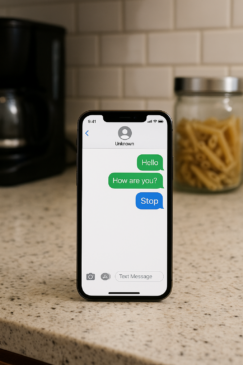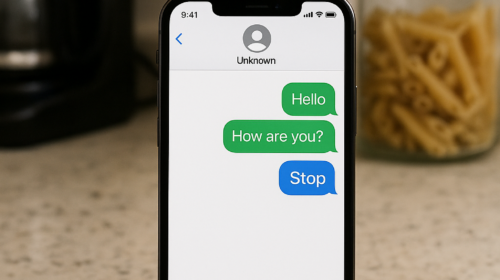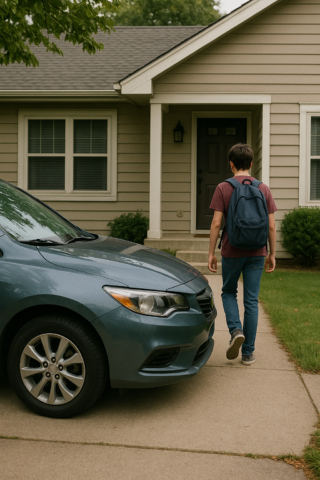It started as an ordinary Wednesday evening. I was cooking dinner when my phone buzzed with a text from an unknown number.
“Hey, is this Sarah’s mom?”
The message was friendly enough, but I didn’t recognize the number. I replied cautiously, asking who it was. The response came quickly: “I met your daughter at the park today. She said I should text you so we can hang out sometime.”
Immediately, alarm bells went off in my head.
The First Red Flag
My daughter, Emily, is only 13. She’s bubbly, social, and talks to everyone. But I’ve always been careful about teaching her not to share personal information with strangers—especially phone numbers.
I called her into the kitchen and asked, “Emily, who did you give my number to today?”
She looked a little sheepish. “Oh, that’s Chloe. I met her at the park. She’s really cool, and she said she just moved here. I thought you guys could meet so I can hang out with her.”

I felt my stomach twist. “How old is Chloe?”
“She said she’s sixteen,” Emily replied, as if that made it better.
Why This Was a Big Deal
To Emily, giving my number to someone was just a shortcut to making new friends. To me, it was a breach of privacy and a potential safety risk. She had no idea who Chloe really was—or if “Chloe” was even her real name.
I explained to Emily that once someone has your phone number, they can use it in ways you can’t control. They can contact you at any time, share it with others, or even link it to your personal information.
The Awkward Call
To be sure, I called the number back. A young-sounding voice answered, but something about the way they spoke felt off—too polished, too quick with answers. When I asked about meeting in person, they got vague and said they’d “figure it out later.” That’s when I decided there would be no further contact.
I told “Chloe” politely that I wasn’t comfortable setting up a meeting and ended the call.
The Lesson Emily Needed to Learn
That night, Emily and I had a long conversation about online and real-world safety. I reminded her that not everyone who seems nice is safe, and that giving out someone else’s number without permission is a violation of their privacy.
I also told her that if she ever meets someone new and wants to stay in touch, she can give them her school email or connect through supervised channels—but my personal phone number is off-limits unless I approve it first.
Her Side of the Story
Emily admitted she hadn’t really thought about it. “I just wanted to make a friend,” she said quietly. I could tell she felt bad, but she also genuinely didn’t understand the risk until we talked it through.
We discussed scenarios where people pretend to be younger than they are, and how meeting strangers—even other teens—should always involve a parent.
Putting New Rules in Place
The next day, I added some new guidelines for her phone and social life. She’s not allowed to share any contact information without checking first. If she meets someone new, we talk about who they are, how they met, and whether it’s safe to keep in touch.
I also installed a parental monitoring app on her phone—not to spy, but to ensure she’s building safe habits.
Moving Forward
I’m glad we caught this early before it became a bigger problem. Emily still rolls her eyes at some of my rules, but she’s starting to understand that they’re there to protect her, not to control her.
And while I can’t prevent every mistake she’ll make as a teenager, I can make sure we have open conversations about them so she knows how to do better next time.
Final Thought: Privacy and safety go hand in hand. Sharing someone’s contact information without permission might seem harmless, but it can expose them—and you—to risks you never considered. In the digital age, even small slips can have big consequences.


